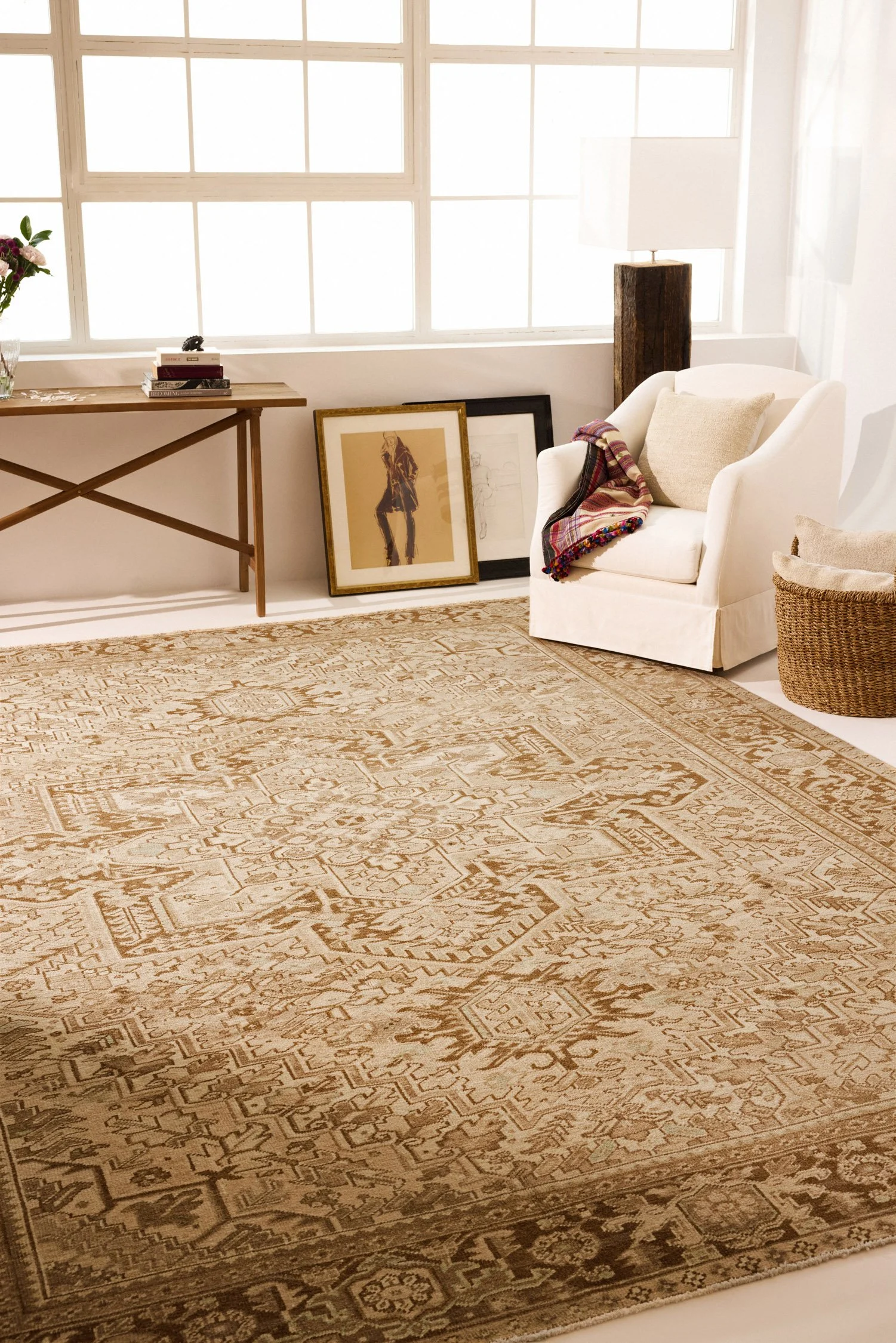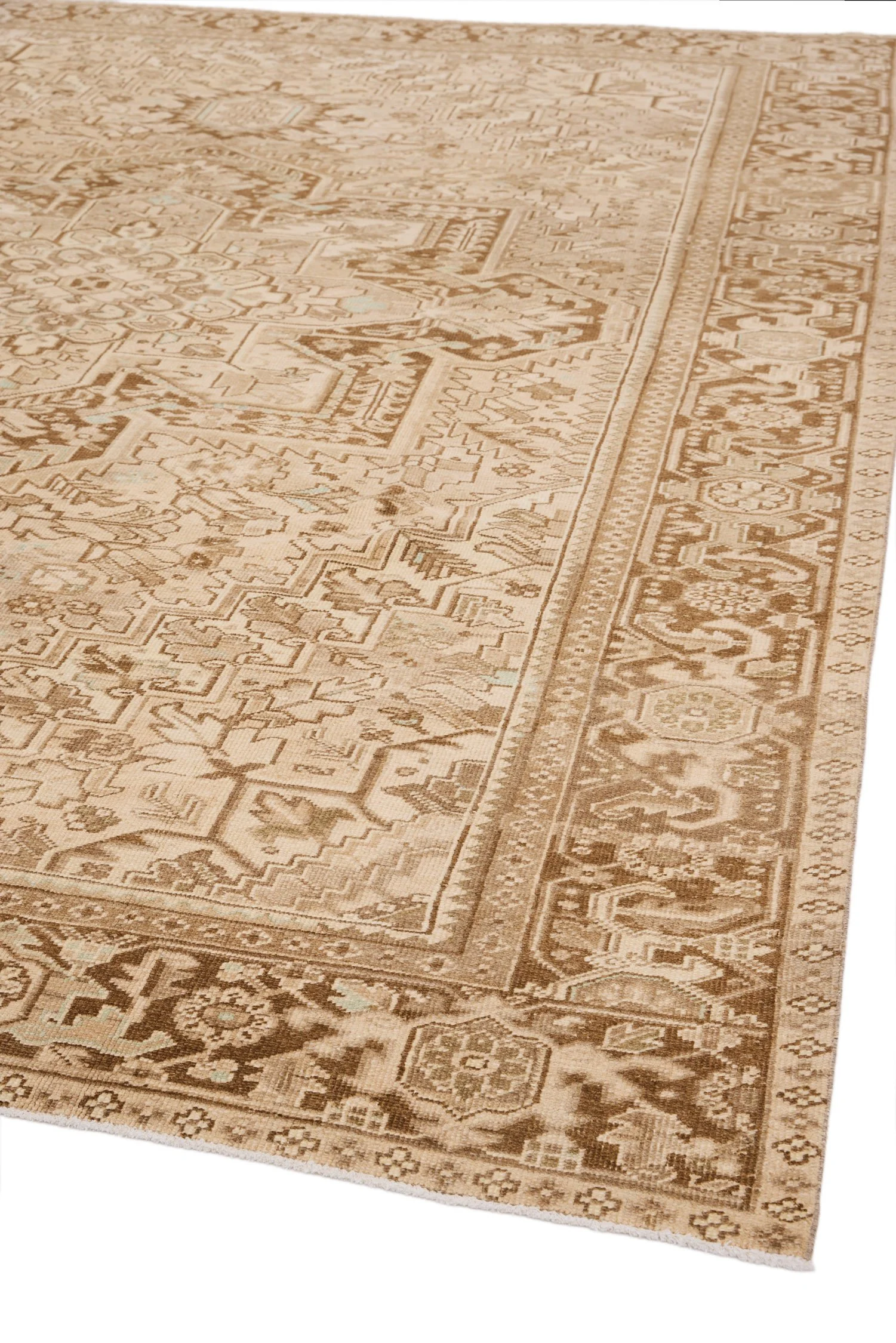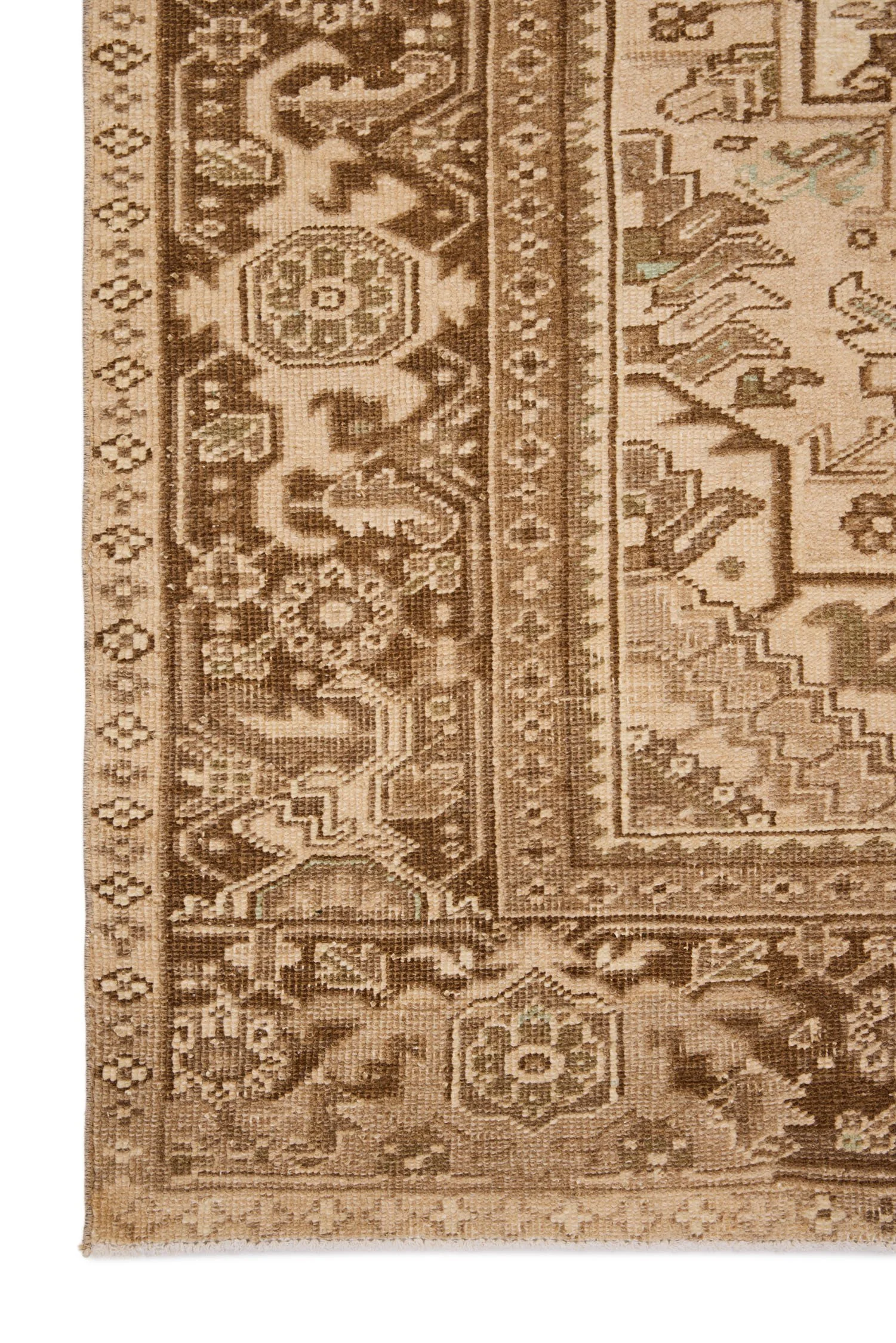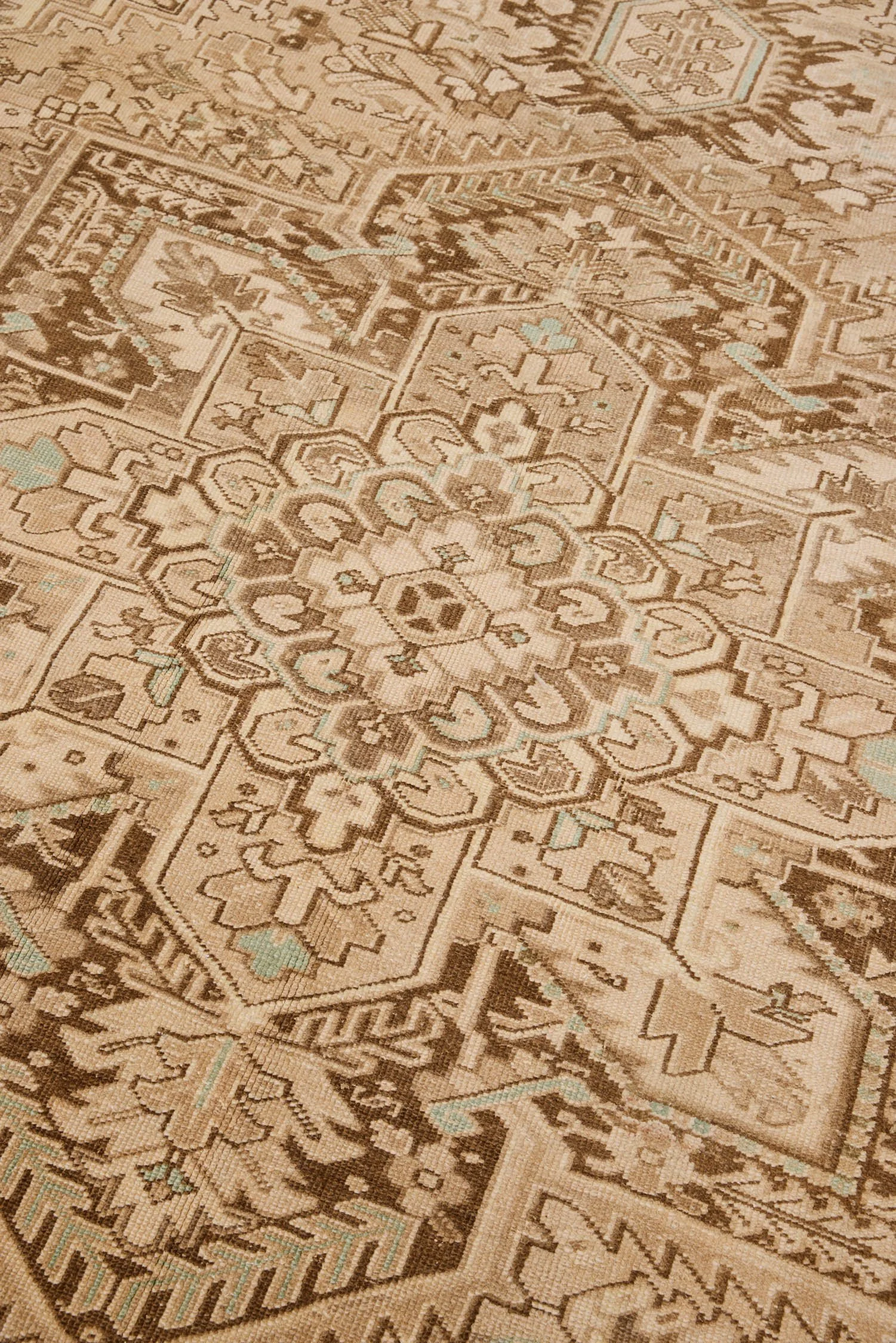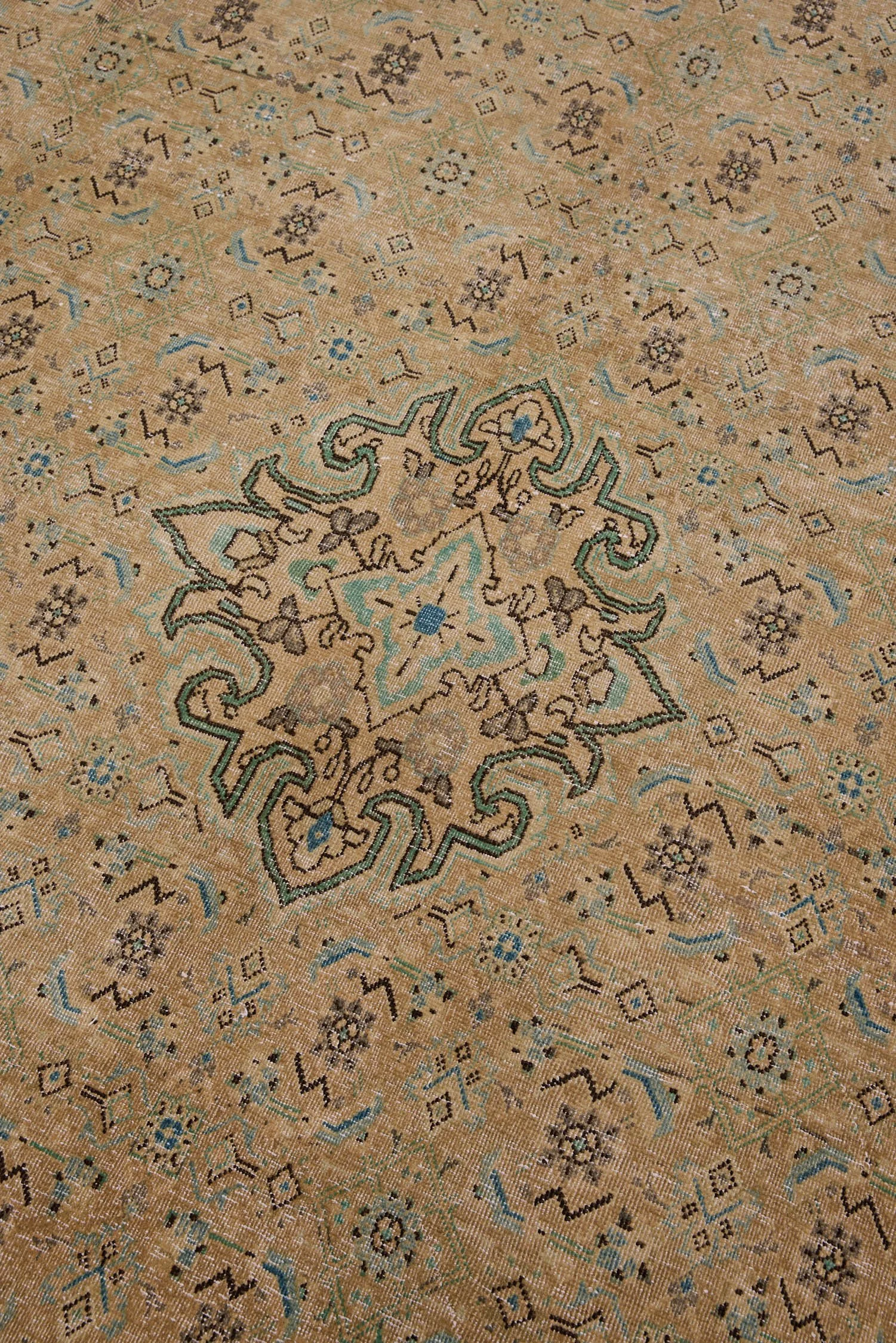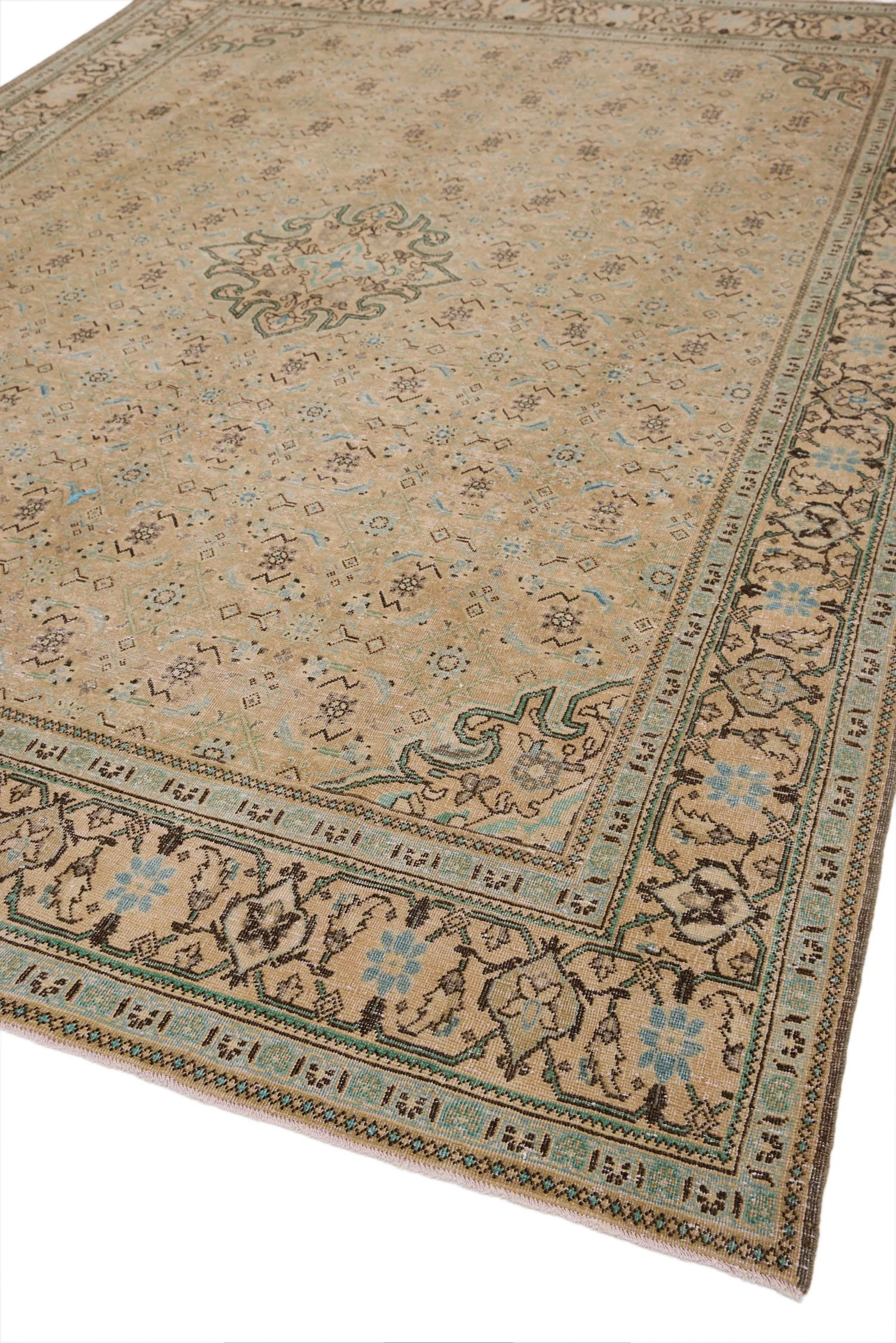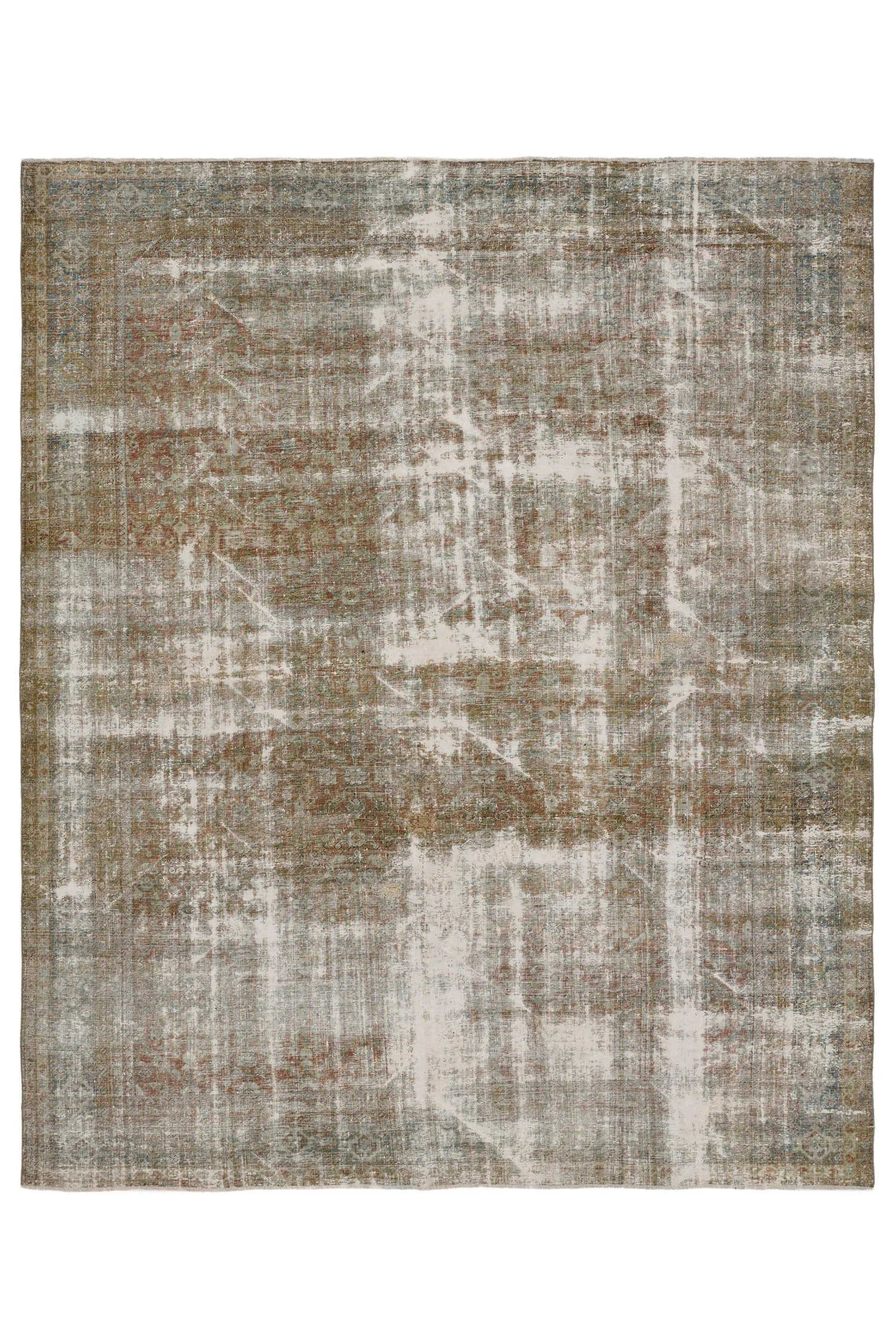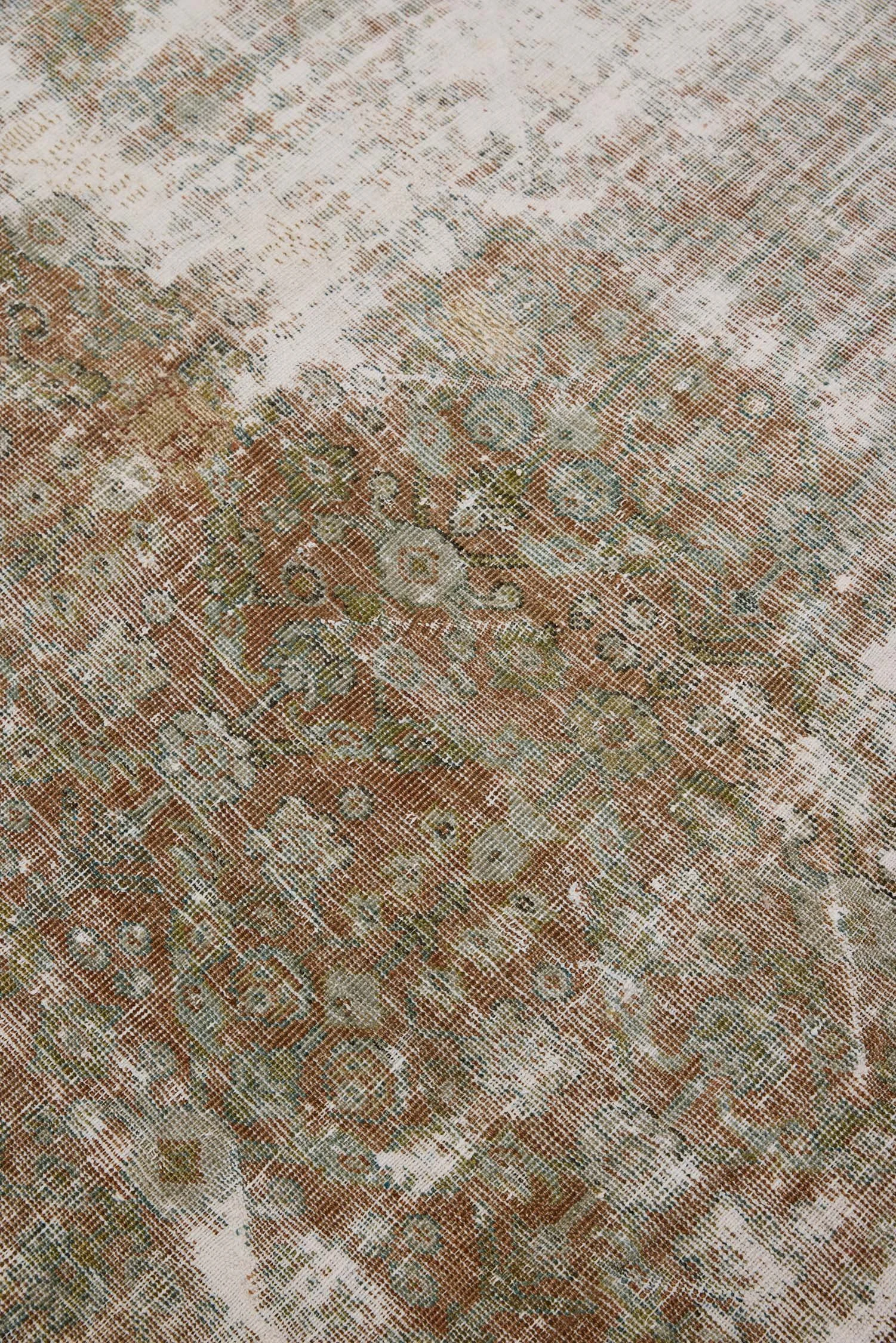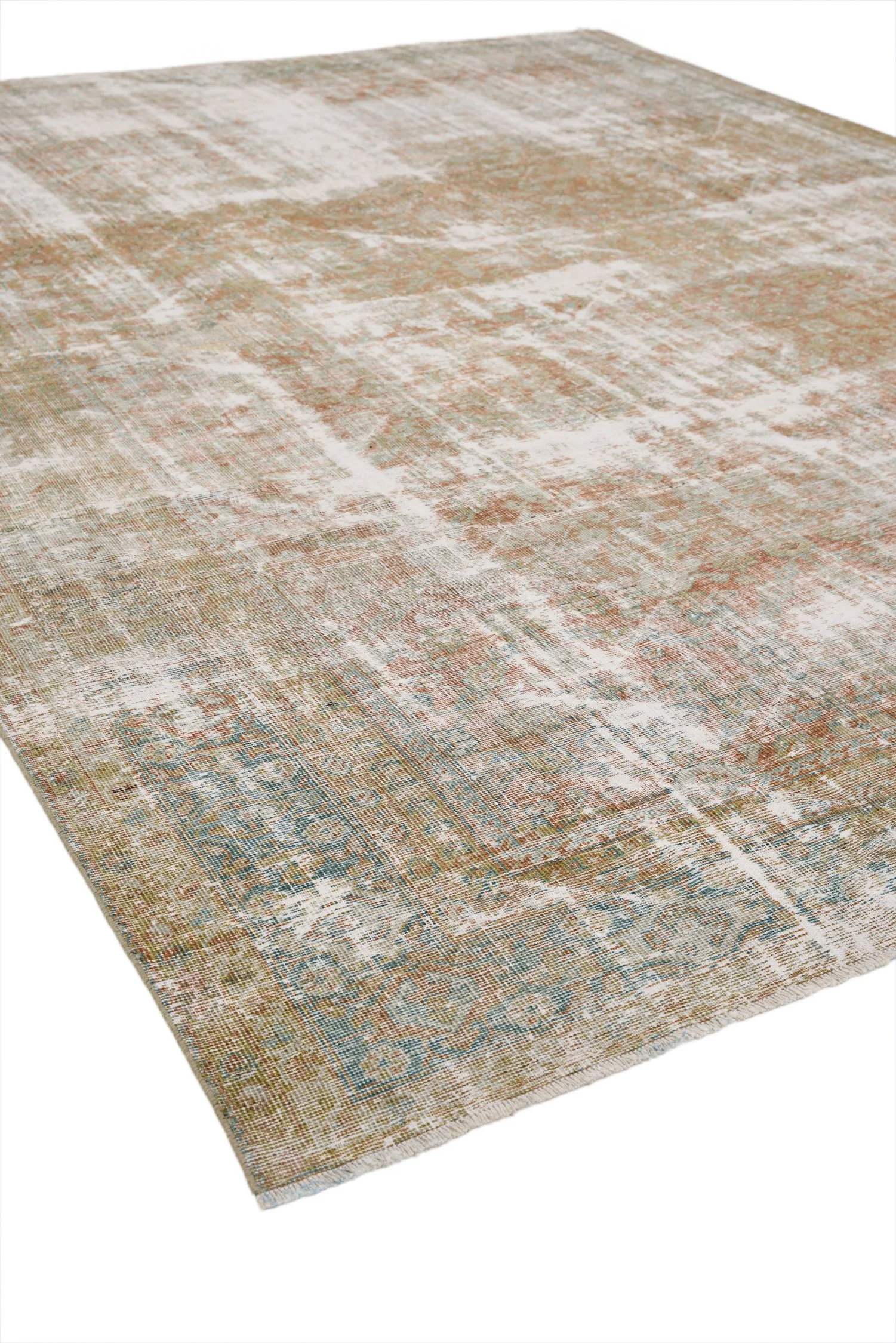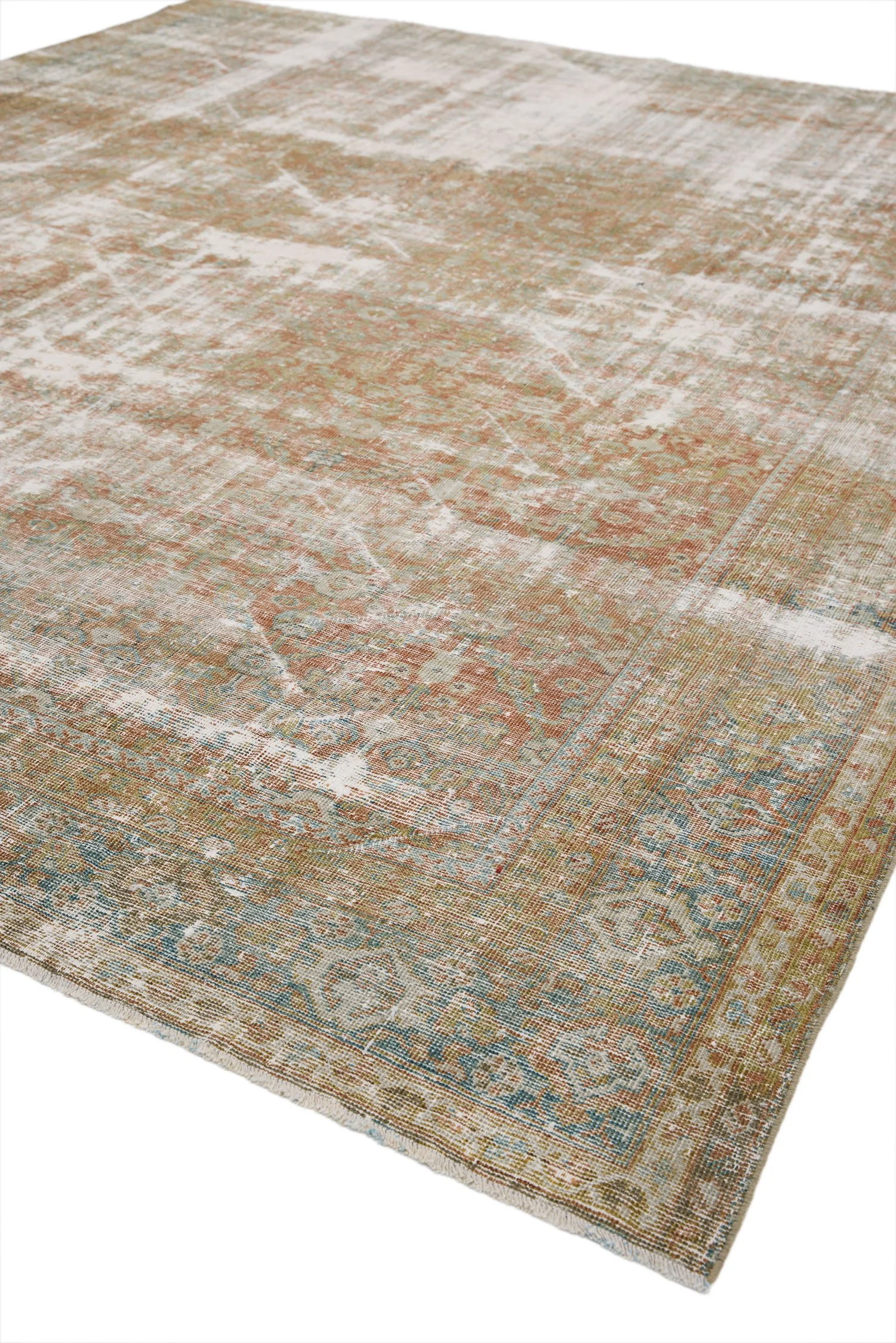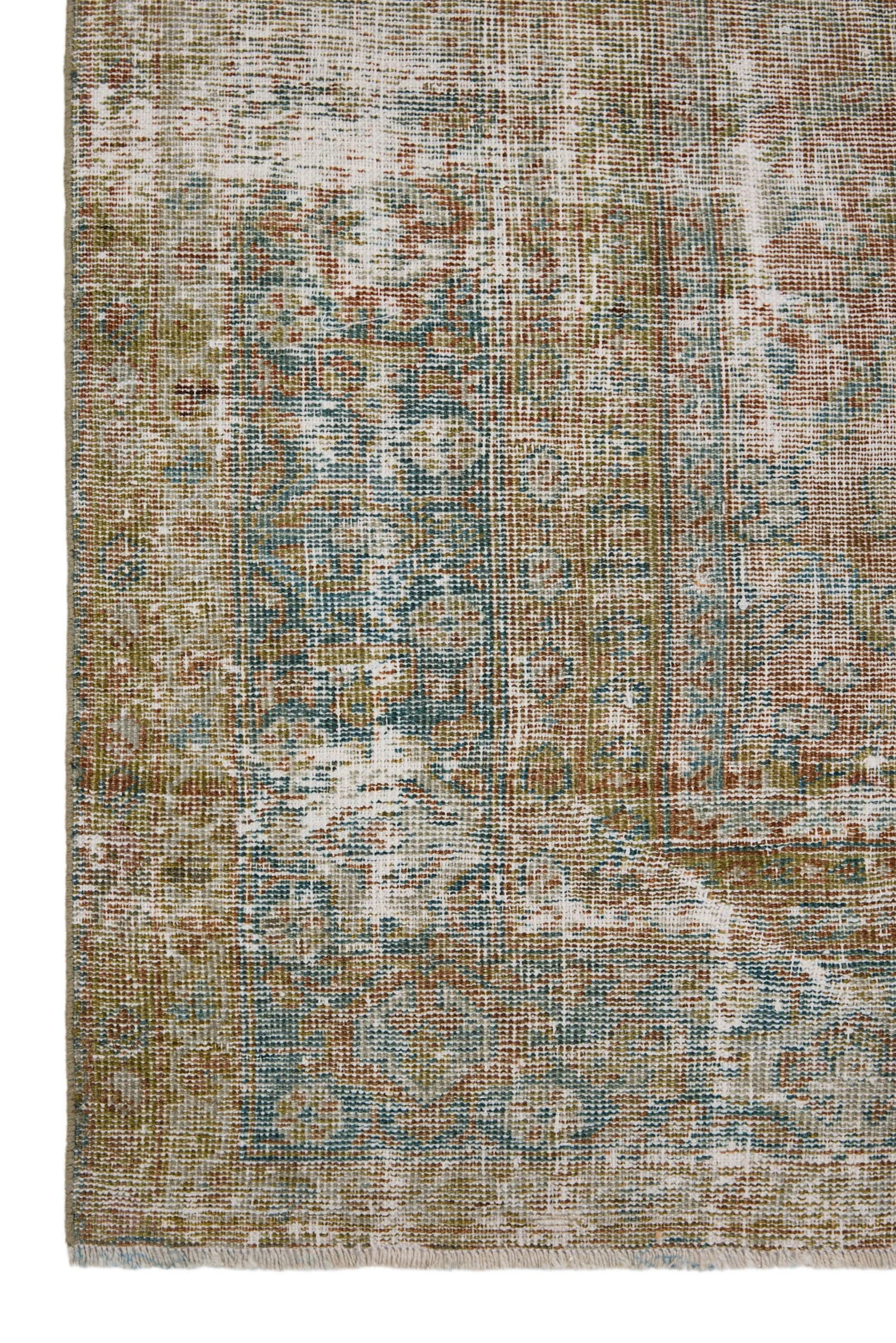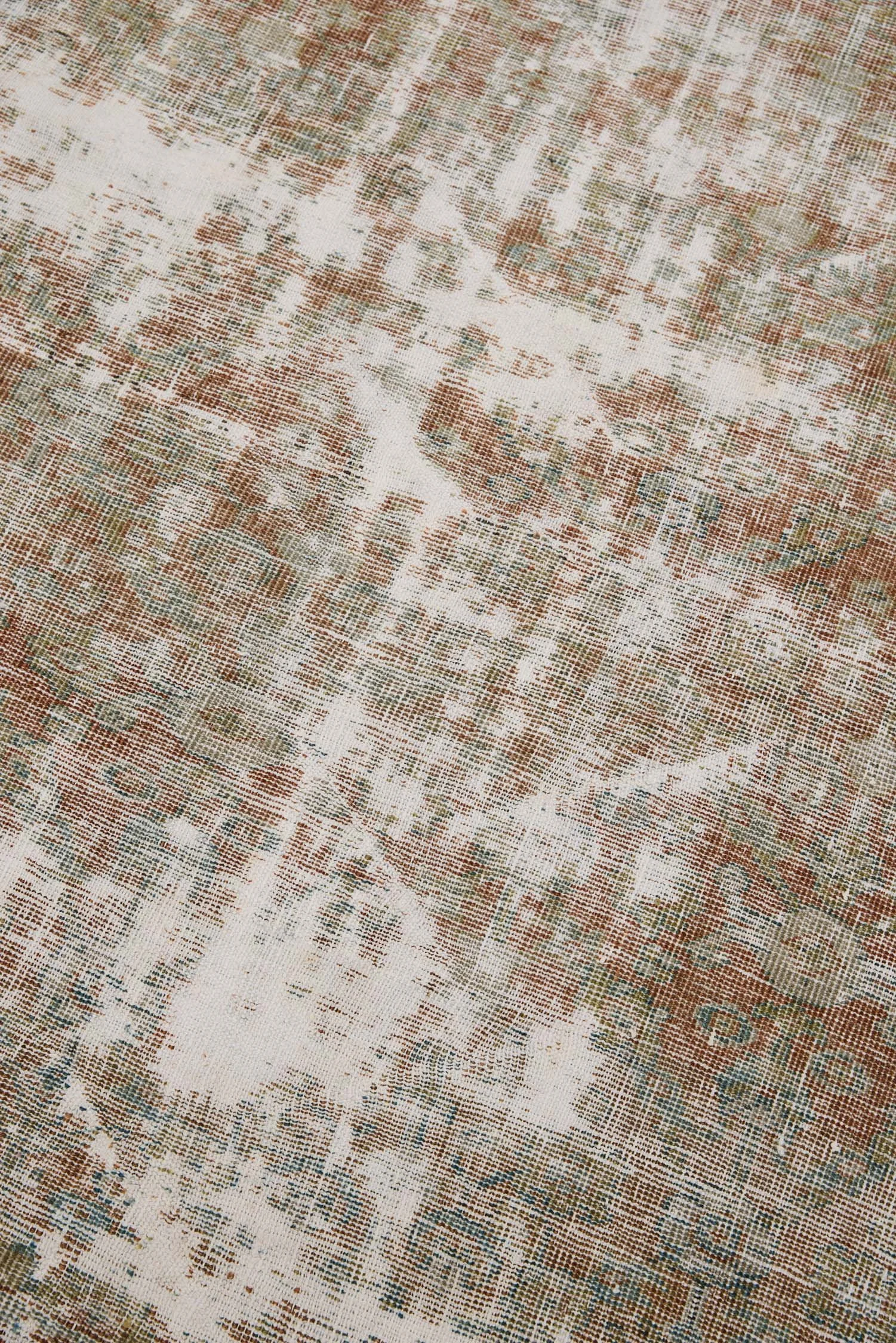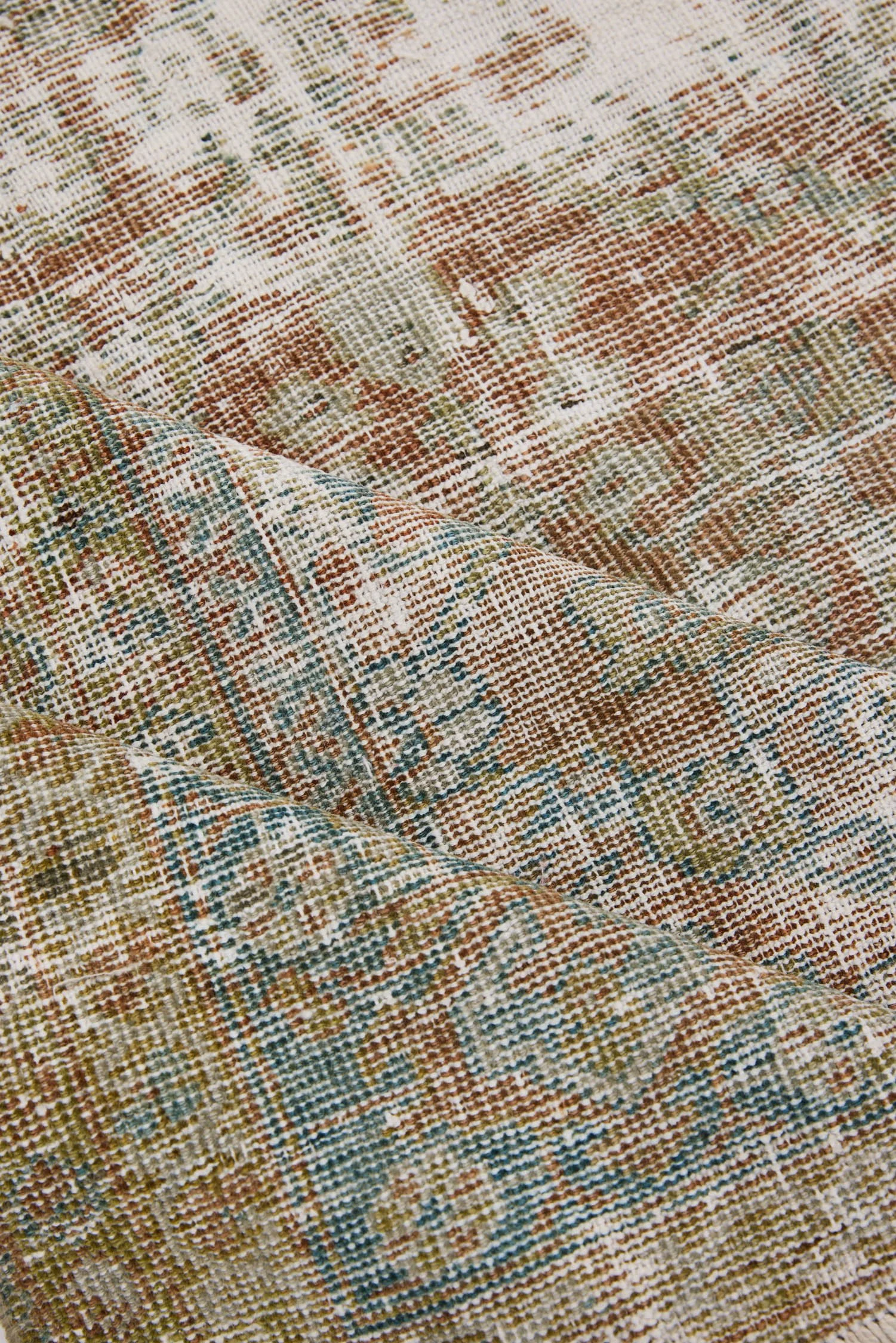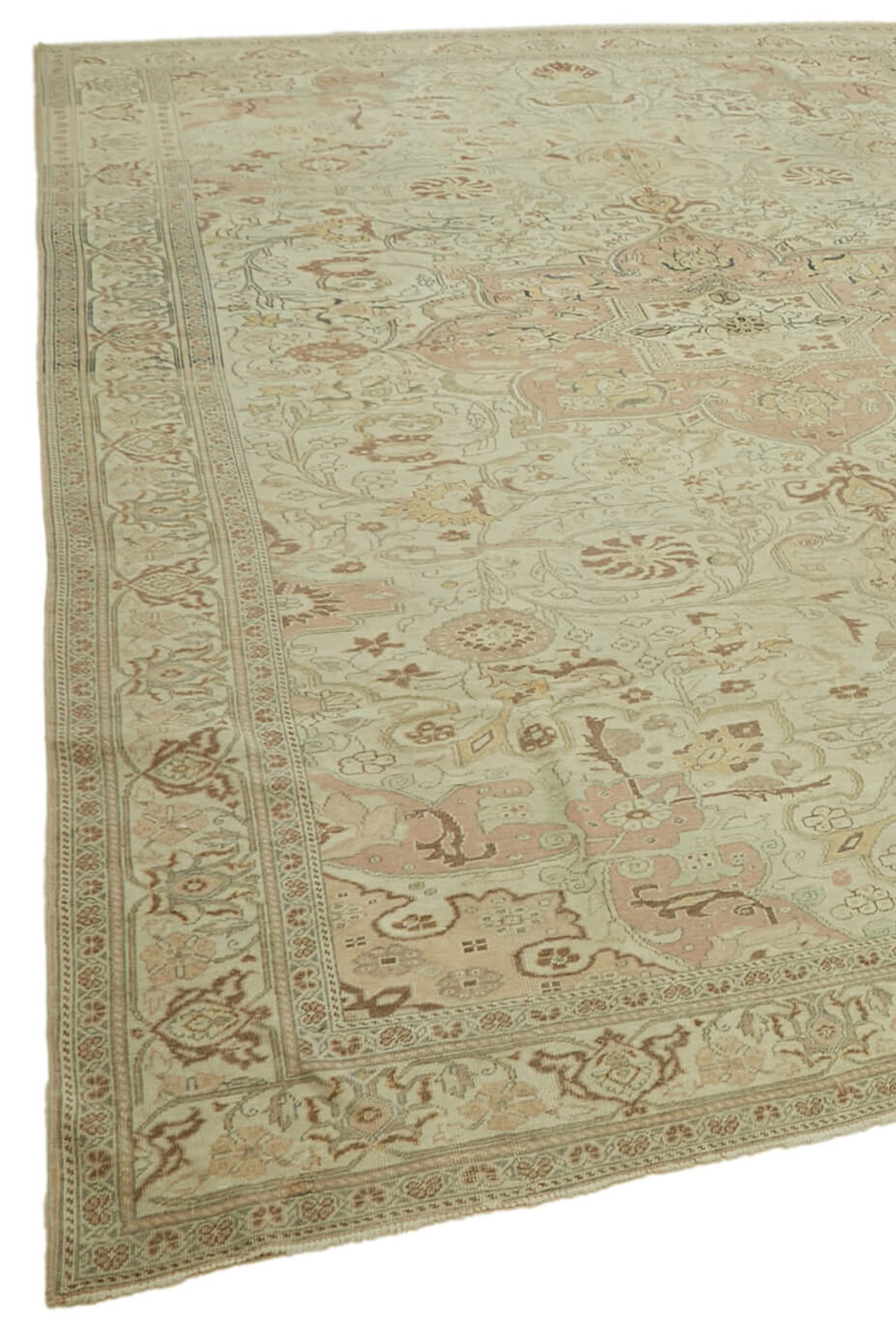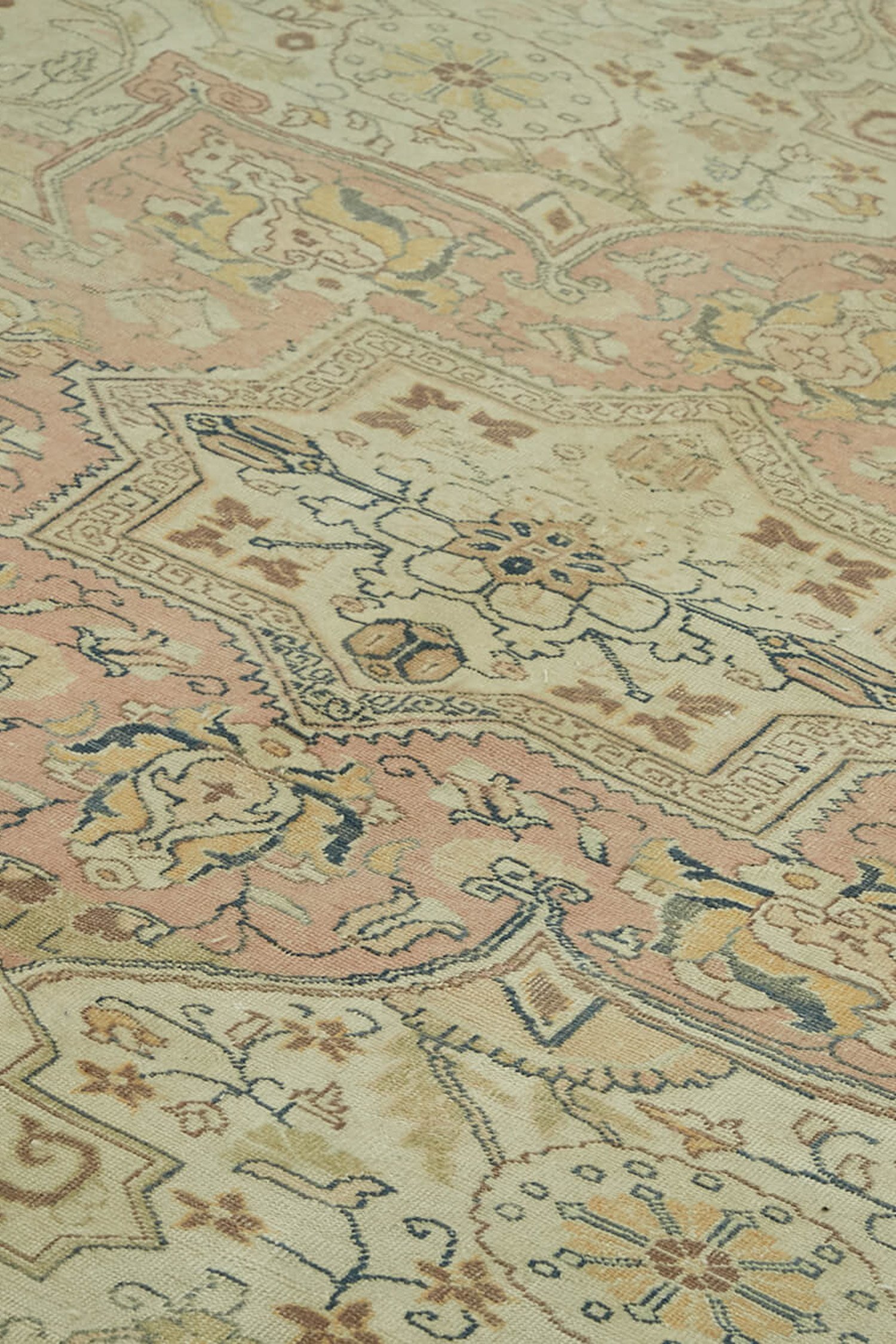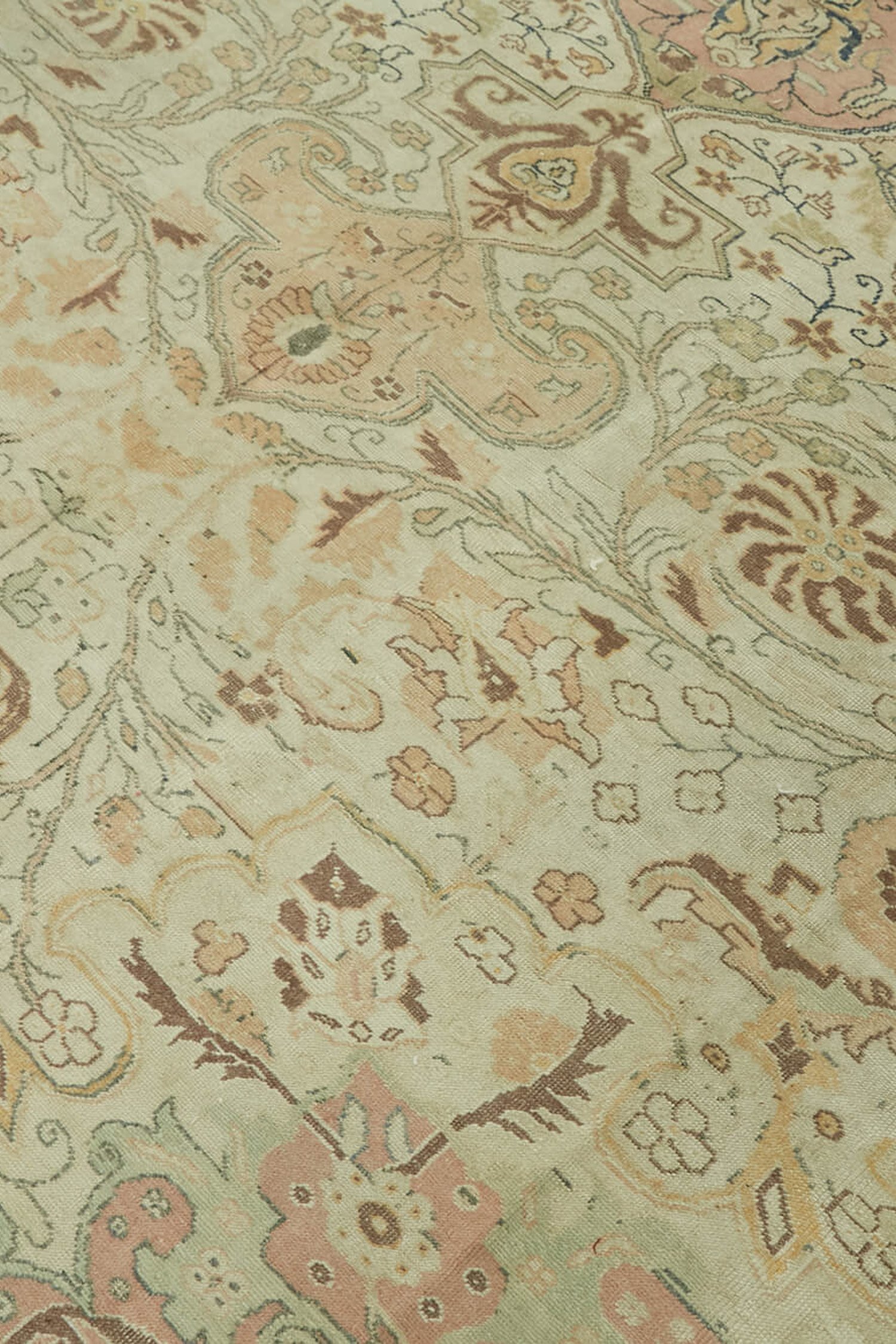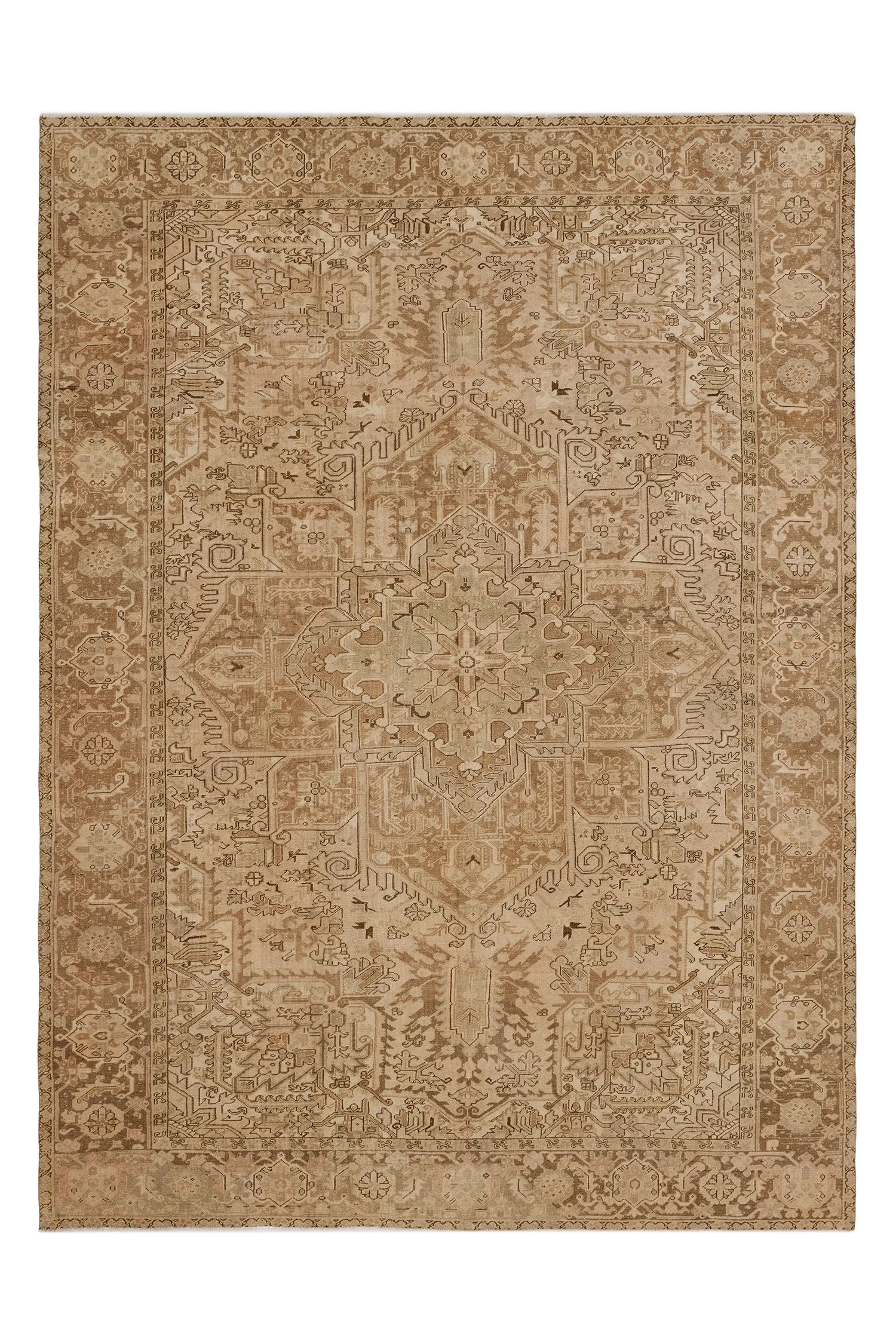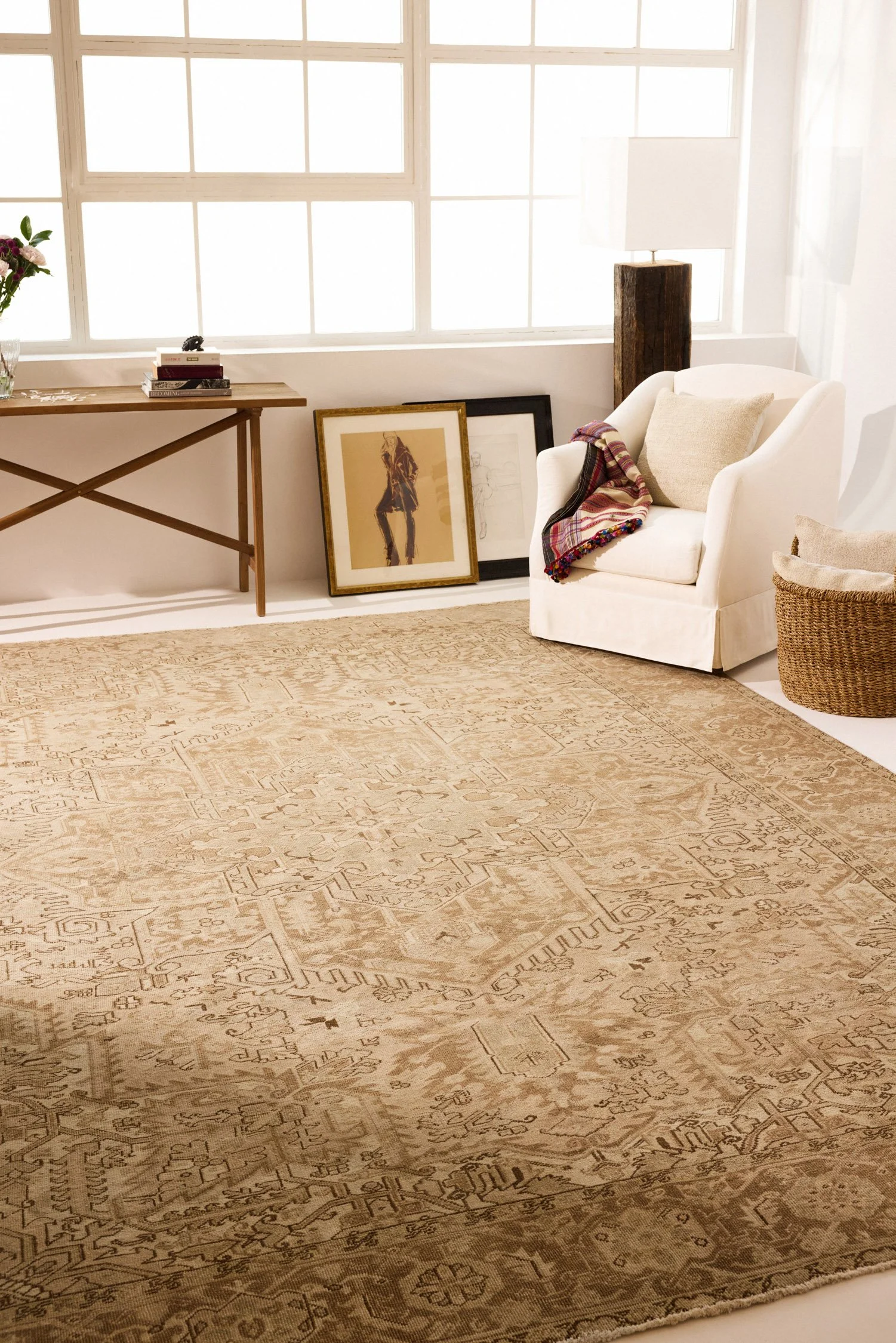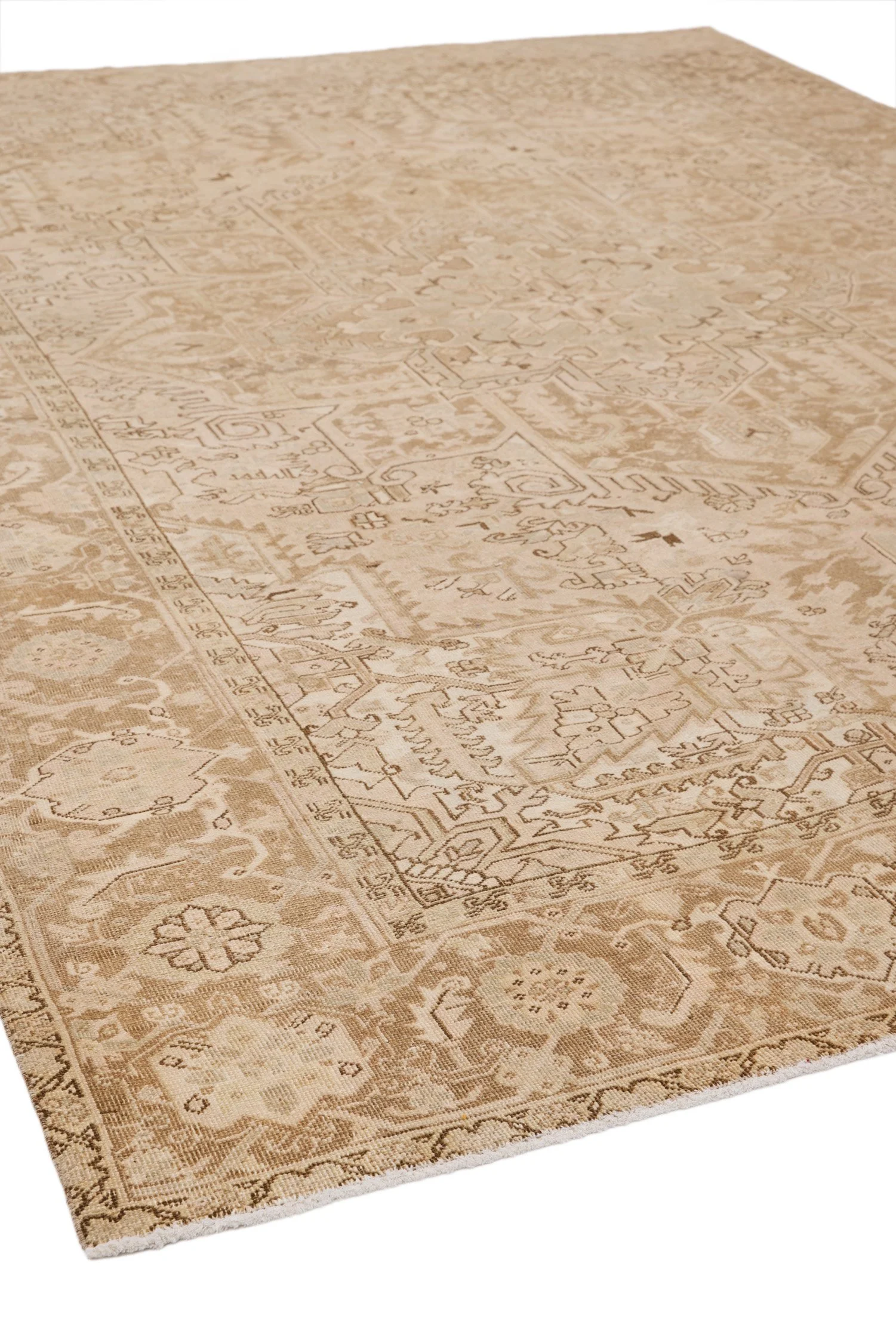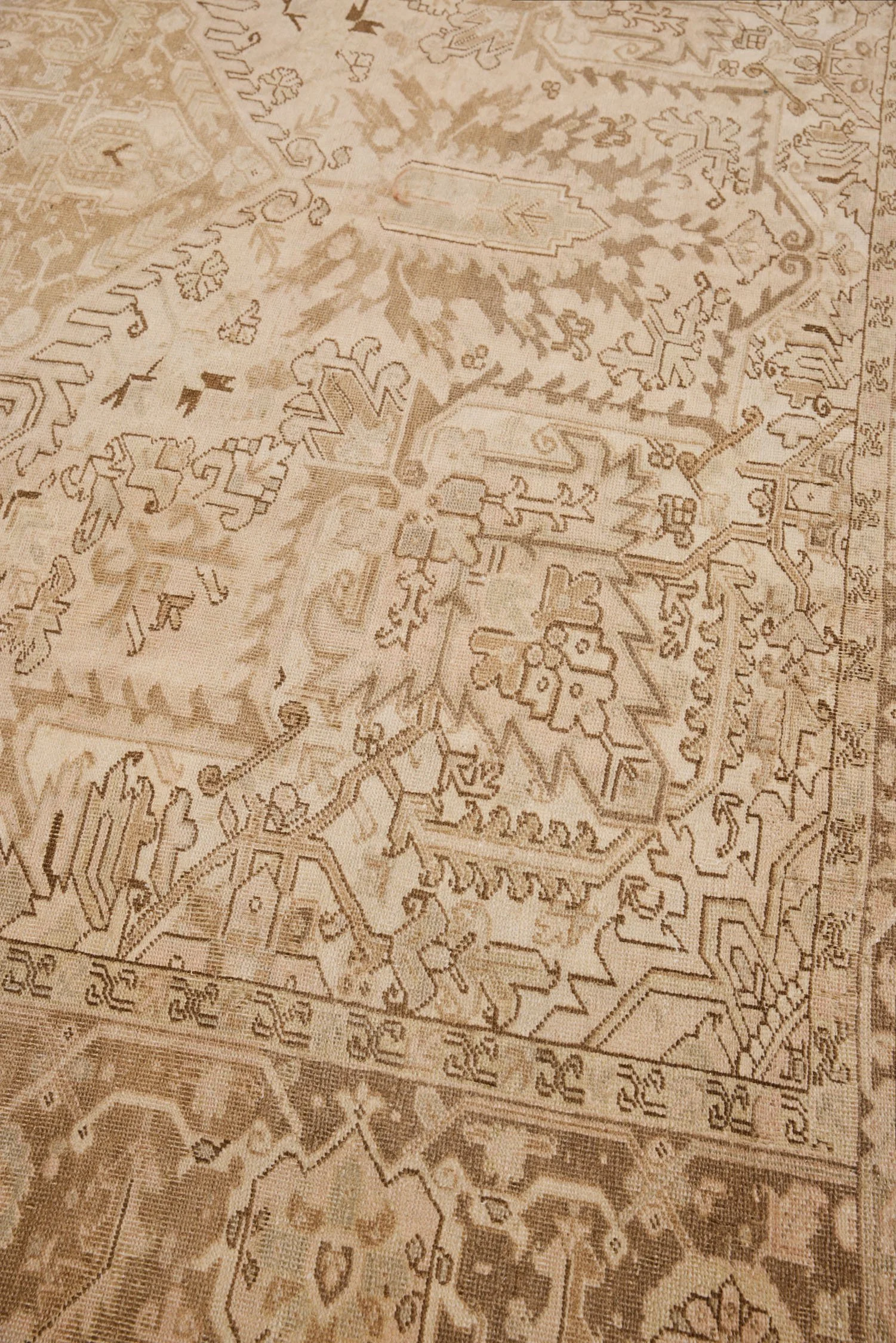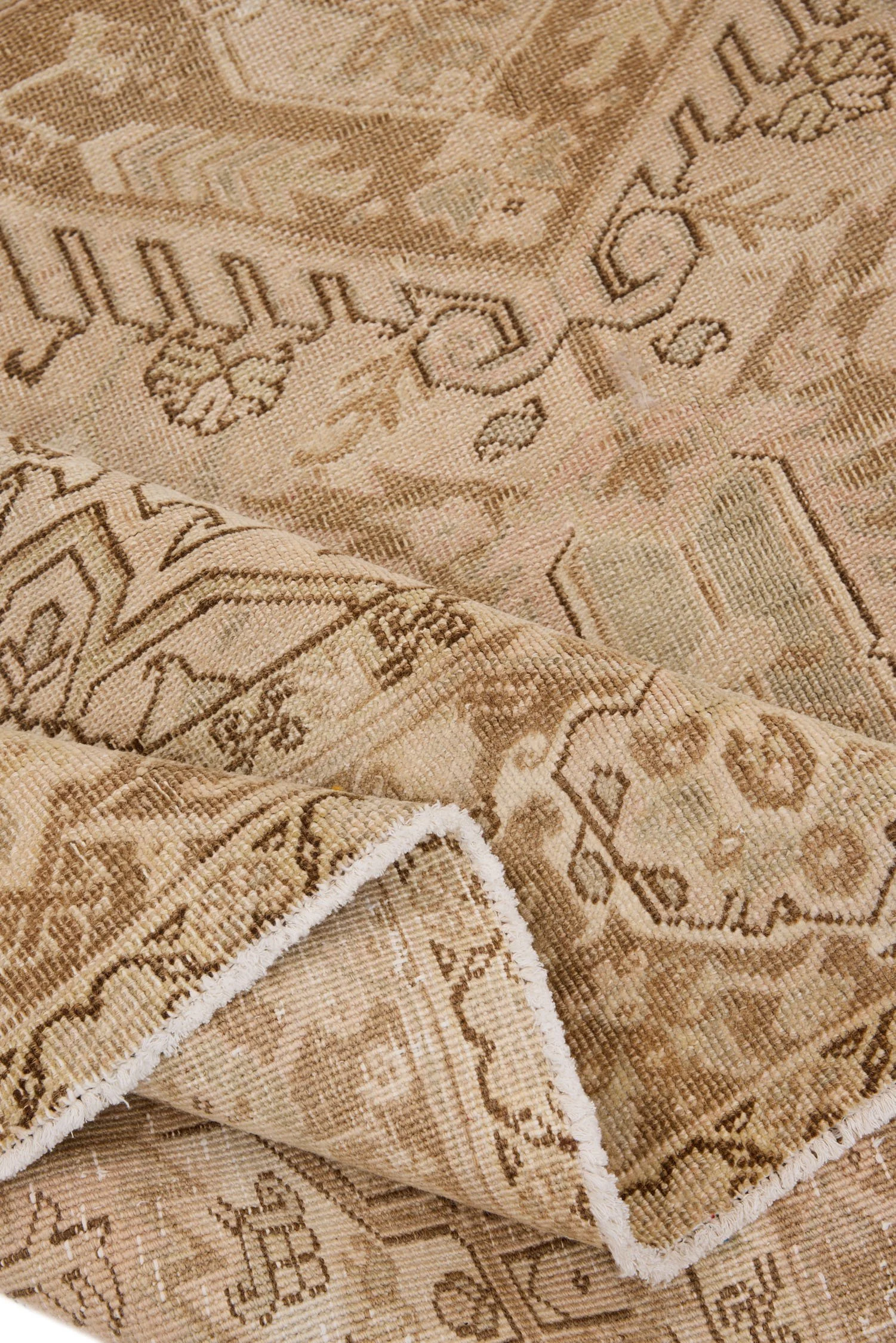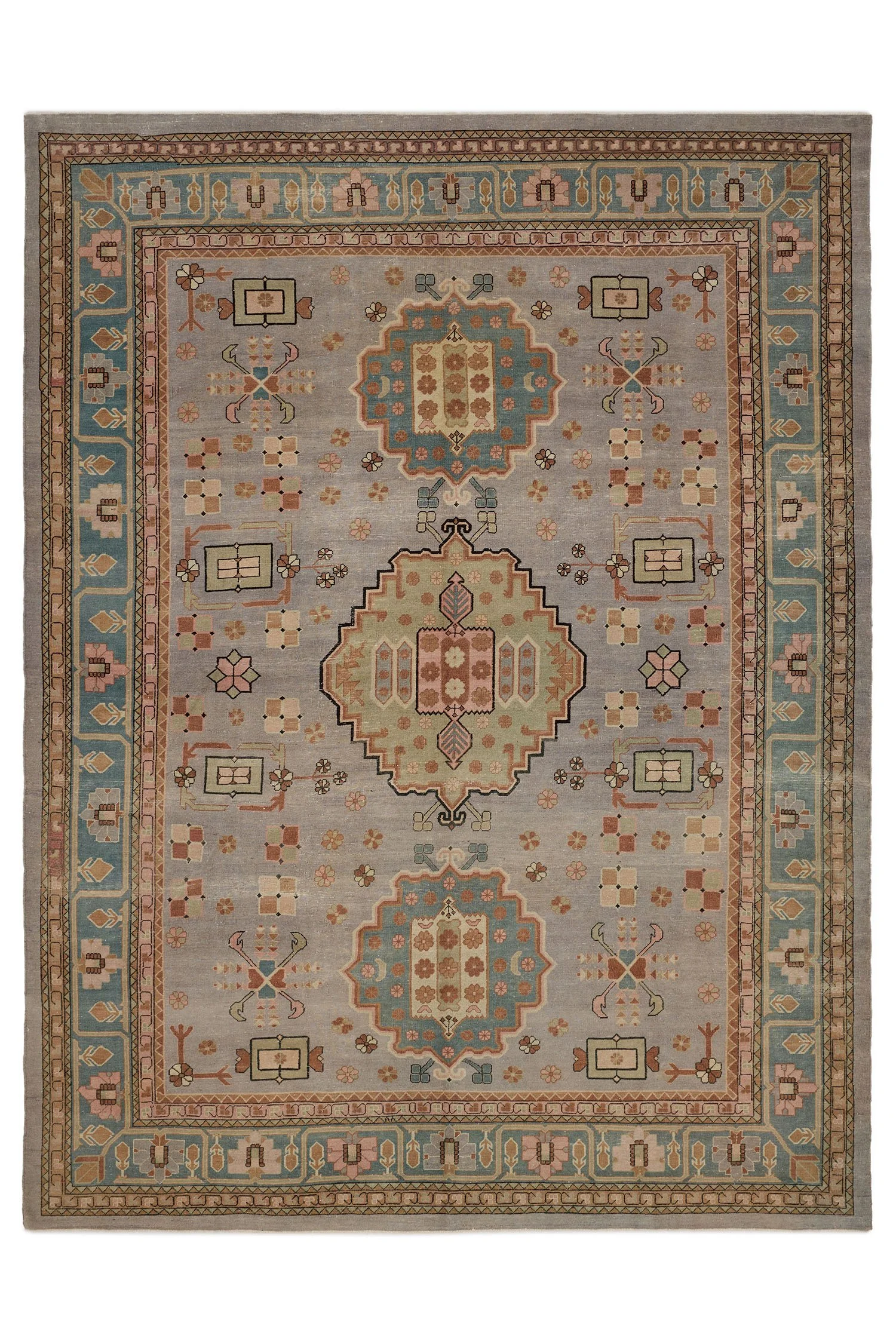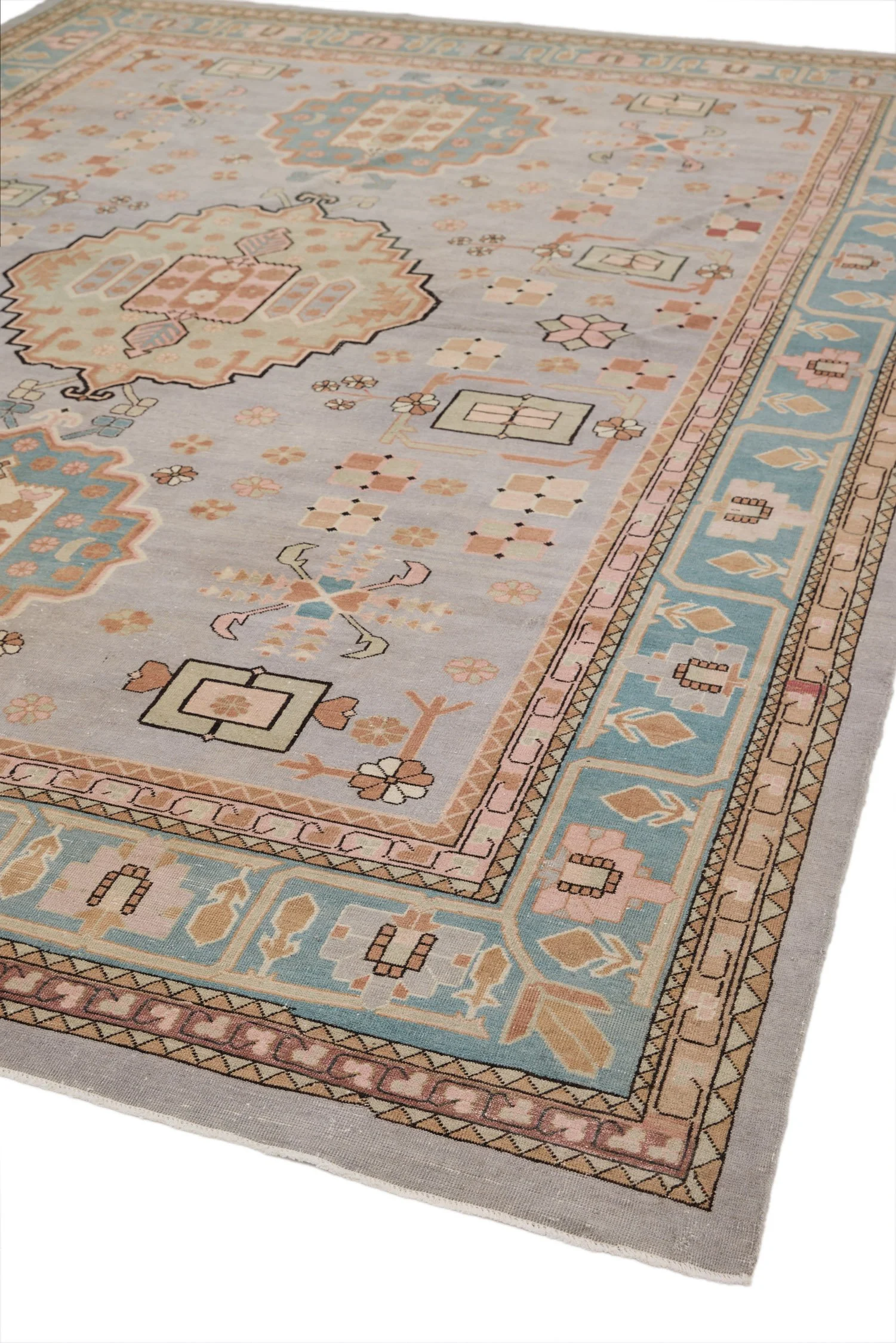Heritage and Craftsmanship
Heriz village weaving reached particular sophistication during the 1950s, when master artisans had perfected the balance between bold geometric impact and refined execution. These large-scale productions required exceptional planning and skill, as weavers needed to maintain design continuity and structural integrity across substantial dimensions while preserving the authentic character of their tribal heritage.
Design Elements
The strong geometric framework establishes visual authority through the large central medallion and its angular extensions, while bold corner spandrels provide balanced architectural support around the field perimeter. Stylized rosettes and vine motifs fill the border with rhythmic patterns that reinforce balance without competing for attention with the central design. The quiet teal highlights serve as perfect counterpoints to the earth tones, adding depth and preventing the neutral palette from becoming monotonous.
Placement
The impressive 9'8" x 12'5" dimensions make this rug ideal for grand living spaces, formal dining rooms, or master bedrooms where its substantial presence can anchor major furniture groupings and define conversation areas. The versatile sandy beige and camel palette with teal accents works beautifully with both warm and cool decorating schemes.
Care Recommendations
To preserve the rug's beauty:
Rotate periodically for even wear
Vacuum regularly using a suction-only setting
Address spills immediately by blotting, never rubbing
Professional cleaning recommended annually
Avoid direct sunlight to maintain color integrity
Large Heriz rugs represent one of Oriental carpet weaving's most impressive achievements, where village traditions scaled up to create pieces that combine monumental presence with intimate handcraft details. Their combination of strength and understated refinement continues to anchor contemporary interiors with authentic cultural gravitas.



